The largest trade gateway in the country
Amidst the hustle and bustle of industrial revolution, the logistics sector in the Southeast region emerges as a giant gear, helping to smoothly operate the private economic machine, spreading goods across regions and reaching out to the world. In the diverse economic picture of this region, logistics is not only a connecting medium but also the “backbone” of the production - trade - import-export value chain, creating a strong lever for the private economy to break through.
 |
Currently, the Southeast region has about 14,800 logistics enterprises, accounting for nearly 50% of the country. |
The Southeast region is blessed with a strategic location, converging all five modes of transport: road, rail, waterway, air and sea. This is a "golden" land connecting domestic and international economies, playing a key role in developing logistics and multimodal transport services. With the Cai Mep - Thi Vai seaport system, Tan Son Nhat international airport, expressways, North - South railway, National Highway 1A, Long Thanh international airport, the Southeast region has become the logistics center of the country, where each container and each shipment is cleared, paving the way for Vietnamese goods to reach all five continents.
Currently, the Southeast region has about 14,800 logistics enterprises, accounting for nearly 50% of the total number of logistics enterprises nationwide, an impressive number, showing the dynamism, creativity and aspiration of the local private economy. These enterprises are not only "docking points" for goods but also important links in the global supply chain, serving the industries of industry, trade, agriculture and import and export.
In addition, the strong development of e-commerce and import-export has opened up golden opportunities for the logistics industry. The expanding consumer market and the increasing demand for freight transport have led to a boom in logistics services. Logistics centers, smart warehouses, multimodal transport services, cross-border e-commerce, etc. are becoming “fertile ground” attracting domestic and foreign logistics enterprises.
 |
Mr. Le Bach Long - Chairman of Dong Nai Province Business Association (left) said that preferential credit policies are needed so that small and medium enterprises can easily access capital to modernize warehouses, means of transport and digital technology. |
Logistics is not only an independent service industry but also a “support” connecting key economic sectors. Modern industrial parks in Ho Chi Minh City, Binh Duong, Dong Nai, Ba Ria - Vung Tau ... are developing rapidly, the demand for logistics is increasing to transport raw materials, components, and finished products. Modern logistics systems help businesses shorten delivery times, optimize inventory, reduce operating costs, thereby enhancing the competitiveness of the whole region.
In particular, logistics also plays a strategic role in trade and import and export. With export turnover accounting for more than 30% of the country, the Southeast is a "transit station" for export goods. Reducing logistics costs will help Vietnamese products become more competitive, expand market share and affirm the country's position in the international market.
Overcoming challenges, reaching international level
However, the Southeast logistics industry still faces many challenges. High logistics costs (about 20% of GDP, nearly twice as high as in developed countries) are "eroding" business profits. Infrastructure connecting different modes of transport is not yet synchronized; traffic congestion on major routes such as National Highway 1A, National Highway 51, and unfinished beltways are disrupting logistics flows.
In addition, there is a shortage of high-quality human resources, digital and management skills have not met the requirements, making the competitiveness of small and medium-sized logistics enterprises not commensurate with their potential. The connection between modes of transport is still not really tight, the lack of high-quality multimodal transport services makes it difficult for businesses to make the most of the supply chain. In particular, customs procedures and international transport documents are still cumbersome, causing time and cost for businesses.
 |
Cai Mep-Thi Vai Port connecting Long Thanh Airport will have all the advantages to develop into a logistics center of the Southeast region and the whole country. |
To solve the above bottlenecks, the Southeast logistics industry needs to be developed synchronously in the overall regional economy, closely linked to the industry, agriculture and trade and services sectors. The implementation of Resolution 24-NQ/TW of the Politburo on the development of the Southeast region and the Central Resolutions on infrastructure breakthroughs, digital transformation, and institutional reform are the key foundations, opening up opportunities for logistics to make a breakthrough.
In the immediate future, it is necessary to accelerate the progress of key infrastructure projects such as Long Thanh airport, Cai Mep - Thi Vai port, regional expressways; develop modern logistics centers and ICDs. At the same time, it is necessary to focus on training high-quality logistics human resources, linking training with business practices and market demand, promoting the application of digital technology and green logistics to improve efficiency and reduce carbon emissions.
Mr. Le Bach Long - Chairman of Dong Nai Province Business Association said: “For logistics to truly become a driving force for private economic development in the Southeast region, priority must be given to removing infrastructure bottlenecks and administrative procedures. In particular, appropriate credit policies are needed to help small and medium-sized enterprises easily access investment capital to modernize warehouses, means of transport and digital technology. At the same time, it is necessary to promote regional connectivity, develop cross-border logistics chains, and help businesses reach out to international markets more sustainably.”
Amidst the intertwined opportunities and challenges, the logistics sector in the Southeast region is facing a historic turning point. With a foundation of 14,800 dynamic logistics enterprises, along with the strong direction of the Central and local governments, logistics will certainly become the “golden key” to turn the Southeast region into a national logistics center, promoting the private economy to break through, and actively contributing to the country’s economic development.
Lesson 1: The Southeast region is a 'gold mine' of the private economy.
(PLVN) - The Southeast region is likened to a growth symphony, where the private economic engine thrives on the innovation platform, becoming a "golden" land that helps businesses break through and make great contributions to the key regional economy.
The big wheels of the private economy
Like a growth engine striding through the innovation station, the Southeast region has emerged in recent years as the economic heart of the country, a vibrant industrial, commercial and logistics center. On a strip of land accounting for only 9% of the country's area and 20% of its population, this region currently regularly maintains more than 30% of GDP, nearly 45% of total state budget revenue and more than 32% of export turnover.
 |
The Southeast is the "bloodline" for transporting goods, raw materials and products from provinces to seaports and airports. |
Looking at the development map, the Southeast region is like the main transmission fluid, flowing vitality to the Vietnamese economy. Ho Chi Minh City plays the role of a "locomotive" pulling the entire national economic train forward, together with Dong Nai, Binh Duong, Ba Ria - Vung Tau, Binh Phuoc and Tay Ninh forming a strong growth triangle. Not only is it a convergence of modern industrial parks, the Southeast region has also become a fertile land for large-scale, high-tech projects, and products with Vietnamese brands reaching out to the international market.
Read more >>>>>>>
Lesson 2: Southeast - the land of innovation of high-tech agriculture
(PLVN) - The Southeast region is promoting the development of high-tech agriculture, with synchronous support policies and strong direction from the Prime Minister, creating leverage for sustainable agricultural production, export and green economic development.
The role of high-tech agriculture
Amidst the hustle and bustle of heavy industries, the Southeast still retains its precious green space, a dynamic agriculture, gradually donning a “new coat” of high technology. If this land is likened to an economic symphony, then high-tech agriculture is the fresh notes, resonating with the melody of innovation and sustainable development.
High-tech agriculture (HTA) is no longer a luxury concept but has become a lever to push the private economy in the Southeast region to develop strongly. In addition to modern production lines or fields managed by smart sensors, the agriculture of this region also creates green, clean, transparent and internationally competitive areas. Each farm and each cooperative is now like a living laboratory, where engineers, farmers and businesses work together to create "sweet fruits" that meet global standards, meeting the increasingly demanding needs of domestic and foreign markets, while adapting to severe climate change.
 |
Traceable raw material growing area of 939 Corporation in Long Thanh, Dong Nai |
The Southeast region is likened to a basket of sweets, converging typical agricultural products, with many key products increasingly asserting their position in the international market. Exported fruits have become the strength of Dong Nai and Binh Phuoc, with mangoes, rambutans, and durians reaching out to the world, present in demanding markets such as the US, EU, and Japan. In the field of aquaculture, Ba Ria - Vung Tau has emerged as a "high-tech shrimp and fish field" with automatic ponds, ensuring food safety, traceability, and creating competitive advantages for exports.
Read more >>>>>>>
Source: https://baophapluat.vn/bai-3-logistics-xuong-song-kinh-te-tu-nhan-vung-dong-nam-bo-post550772.html
















![[Video] Hoang Van Sac - A living witness of a time of bombs and bullets](https://vphoto.vietnam.vn/thumb/402x226/vietnam/resource/IMAGE/2025/6/14/57b3f91b88f148038e3c473f8a619d70)
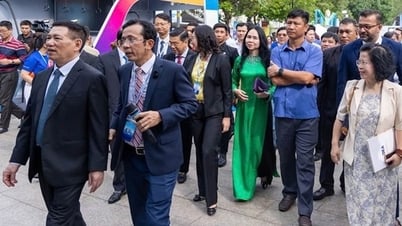











![[Photo] Prime Minister Pham Minh Chinh receives leaders of several Swedish corporations](https://vphoto.vietnam.vn/thumb/1200x675/vietnam/resource/IMAGE/2025/6/14/4437981cf1264434a949b4772f9432b6)









































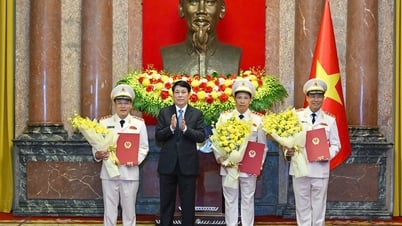






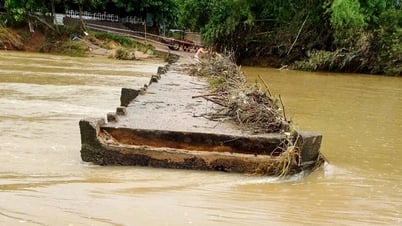




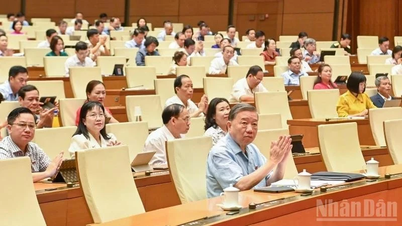







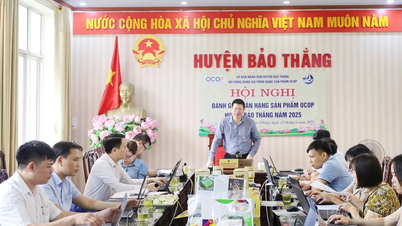






Comment (0)